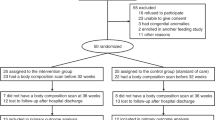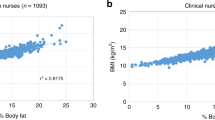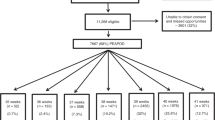Abstract
Body composition analysis to distinguish between fat mass and fat-free mass is an established research approach to assess nutritional status. Within neonatal medicine, preterm infant body composition is linked with later health outcomes including neurodevelopment and cardiometabolic health. Mounting evidence establishing fat-free mass as an indicator of nutritional status, coupled with the availability of testing approaches that are feasible to use in preterm infants, have enhanced interest in measuring body composition in the neonatal intensive care unit (NICU) setting. In this paper, we use the concept of clinical utility—the added value of a new methodology over current standard care—as a framework for assessing several existing body composition methodologies with potential for clinical application to preterm neonates. We also use this framework to identify remaining knowledge gaps and prioritize efforts to advance our understanding of clinically-oriented body composition testing in the NICU.
This is a preview of subscription content, access via your institution
Access options
Subscribe to this journal
Receive 12 print issues and online access
$259.00 per year
only $21.58 per issue
Buy this article
- Purchase on Springer Link
- Instant access to full article PDF
Prices may be subject to local taxes which are calculated during checkout

Similar content being viewed by others
References
Ramel SE, Gray HL, Christiansen E, Boys C, Georgieff MK, Demerath EW. Greater early gains in fat-free mass, but not fat mass, are associated with improved neurodevelopment at 1 year corrected age for prematurity in very low birth weight preterm infants. J Pediatr. 2016;173:108–15.
Pfister KM, Zhang L, Miller NC, Ingolfsland EC, Demerath EW, Ramel SE. Early body composition changes are associated with neurodevelopmental and metabolic outcomes at 4 years of age in very preterm infants. Pediatr Res. 2018;84:713.
Bell KA, Matthews LG, Cherkerzian S, Prohl AK, Warfield SK, Inder TE, et al. Associations of body composition with regional brain volumes and white matter microstructure in very preterm infants. Arch Dis Child Fetal Neonatal Ed. 2022;107:533–8.
Bua J, Risso FM, Bin M, Vallon F, Travan L, Paviotti G. Association between body composition at term equivalent age and Bayley scores at 2 years in preterm infants. J Perinatol. 2021; Available from: http://www.nature.com/articles/s41372-021-01074-x.
Binder C, Buchmayer J, Thajer A, Giordano V, Schmidbauer V, Harreiter K, et al. Association between fat-free mass and brain size in extremely preterm infants. Nutrients. 2021;13:4205.
Alja’nini Z, McNelis KM, Viswanathan S, Goddard GR, Merlino-Barr S, Collin M, et al. Infant body composition assessment in the neonatal intensive care unit (NICU) using air displacement plethysmography: strategies for implementation into clinical workflow. Clin Nutr ESPEN. 2021;43:212–22.
Urlando A, Dempster P, Aitkens S. A new air displacement plethysmograph for the measurement of body composition in infants. Pediatr Res. 2003;53:486–92.
Bossuyt PMM, Reitsma JB, Linnet K, Moons KGM. Beyond diagnostic accuracy: The Clinical Utility of Diagnostic Tests. Clin Chem. 2012;58:1636–43.
Van den Bruel A, Cleemput I, Aertgeerts B, Ramaekers D, Buntinx F. The evaluation of diagnostic tests: evidence on technical and diagnostic accuracy, impact on patient outcome and cost-effectiveness is needed. J Clin Epidemiol. 2007;60:1116–22.
Demerath EW, Fields DA. Body composition assessment in the infant. Am J Hum Biol. 2014;26:291–304.
Fomon SJ, Nelson SE. Body composition of the male and female reference infants. Annu Rev Nutr. 2002;22:1–17.
Fomon SJ, Haschke F, Ziegler EE, Nelson SE. Body composition of reference children from birth to age 10 years. Am J Clin Nutr. 1982;35:1169–75.
Sainz RD, Urlando A. Evaluation of a new pediatric air-displacement plethysmograph for body-composition assessment by means of chemical analysis of bovine tissue phantoms. Am J Clin Nutr. 2003;77:364–70.
Ellis KJ, Manjiang Y, Shypailo RJ, Urlando A, Wong WW, Heird WC. Body-composition assessment in infancy: air-displacement plethysmography compared with a reference 4-compartment model. Am J Clin Nutr. 2007;85:90–5.
Ma G, Yao M, Liu Y, Lin A, Zou H, Urlando A, et al. Validation of a new pediatric air-displacement plethysmograph for assessing body composition in infants. Am J Clin Nutr. 2004;79:653–60.
Roggero P, Giannì ML, Amato O, Piemontese P, Morniroli D, Wong WW, et al. Evaluation of air-displacement plethysmography for body composition assessment in preterm infants. Pediatr Res. 2012;72:316–20.
Forsum E, Olhager E, Törnqvist C. An evaluation of the pea pod system for assessing body composition of moderately premature infants. Nutrients. 2016;8:238.
Ramel SE, Gray HL, Davern BA, Demerath EW. Body composition at birth in preterm infants between 30 and 36 weeks gestation. Pediatr Obes. 2015;10:45–51.
Ziegler EE, O’Donnell AM, Nelson SE, Fomon SJ. Body composition of the reference fetus. Growth. 1976;40:329–41.
Norris T, Ramel SE, Catalano P, Caoimh C ni, Roggero P, Murray D. et al. New charts for the assessment of body composition, according to air-displacement plethysmography, at birth and across the first 6 mo of life. Am J Clin Nutr. 2019;109:1353–60.
Villar J, Puglia FA, Fenton TR, Cheikh Ismail L, Staines-Urias E, Giuliani F, et al. Body composition at birth and its relationship with neonatal anthropometric ratios: the newborn body composition study of the INTERGROWTH-21st project. Pediatr Res. 2017;82:305–16.
Mazahery H, von Hurst PR, McKinlay CJD, Cormack BE, Conlon CA. Air displacement plethysmography (pea pod) in full-term and pre-term infants: a comprehensive review of accuracy, reproducibility, and practical challenges. Matern Health Neonatol Perinatol. 2018;4:12.
Algotar A, Shaikhkhalil AK, Siler-Wurst K, Sitaram S, Gulati I, Jadcherla SR. Unique patterns of body composition and anthropometric measurements during maturation in neonatal intensive care unit neonates: opportunities for modifying nutritional therapy and influencing clinical outcomes. JPEN J Parenter Enter Nutr. 2018;42:231–8.
Belfort M, Cherkerzian S, Bell K, Soldateli B, Cordova Ramos E, Palmer C, et al. Macronutrient intake from human milk, infant growth, and body composition at term equivalent age: a longitudinal study of hospitalized very preterm infants. Nutrients. 2020;12:2249.
Bell KA, Matthews LG, Cherkerzian S, Palmer C, Drouin K, Pepin HL, et al. Associations of growth and body composition with brain size in preterm infants. J Pediatr. 2019;214:20–26.e2.
Pfister KM, Gray HL, Miller NC, Demerath EW, Georgieff MK, Ramel SE. Exploratory study of the relationship of fat-free mass to speed of brain processing in preterm infants. Pediatr Res. 2013;74:576–83.
Frondas-Chauty A, Simon L, Flamant C, Hanf M, Darmaun D, Rozé JC. Deficit of fat free mass in very preterm infants at discharge is associated with neurological impairment at age 2 years. J Pediatr. 2018;196:301–4.
Ramel SE, Haapala J, Super J, Boys C, Demerath EW. Nutrition, illness and body composition in very low birth weight preterm infants: implications for nutritional management and neurocognitive outcomes. Nutrients. 2020;12:145.
Godang K, Qvigstad E, Voldner N, Isaksen GA, Frøslie KF, Nøtthellen J, et al. Assessing body composition in healthy newborn infants: reliability of dual-energy X-ray absorptiometry. J Clin Densitom. 2010;13:151–60.
Venkataraman PS, Ahluwalia BW. Total bone mineral content and body composition by x-ray densitometry in newborns. Pediatrics. 1992;90:767–70.
Chauhan S, Koo WWK, Hammami M, Hockman EM. Fan beam dual energy X-ray absorptiometry body composition measurements in piglets. J Am Coll Nutr. 2003;22:408–14.
Hammami M, Koo WWK, Hockman EM. Body composition of neonates from fan beam dual energy X-ray absorptiometry measurement. JPEN J Parenter Enter Nutr. 2003;27:423–6.
Brunton JA, Weiler HA, Atkinson SA. Improvement in the accuracy of dual energy X-ray absorptiometry for whole body and regional analysis of body composition: validation using piglets and methodologic considerations in infants. Pediatr Res. 1997;41:590–6.
Rigo J, Nyamugabo K, Picaud JC, Gerard P, Pieltain C, De, et al. Reference values of body composition obtained by dual energy X-ray absorptiometry in preterm and term neonates. J Pediatr Gastroenterol Nutr. 1998;27:184–90.
Lapillonne A, Braillon P, Claris O, Chatelain PG, Delmas PD, Salle BL. Body composition in appropriate and in small for gestational age infants. Acta Paediatr. 1997;86:196–200.
Gallagher D, Andres A, Fields DA, Evans WJ, Kuczmarski R, Lowe WL, et al. Body composition measurements from birth through 5 years: challenges, gaps, and existing & emerging technologies—a National Institutes of Health workshop. Obes Rev. 2020;21:e13033.
Andrews L, Phlegar K, Baatz JE, Ebeling MD, Shary JR, Gregoski MJ, et al. Comparison of infant bone mineral content and density after infant daily oral Vit D 400 IU supplementation versus nursing mother oral 6400 IU supplementation: a randomized controlled lactation study. Breastfeed Med. 2022;17:493–500.
Koo WW, Walters J, Bush AJ, Chesney RW, Carlson SE. Dual-energy X-ray absorptiometry studies of bone mineral status in newborn infants. J Bone Min Res. 1996;11:997–102.
Cooke RJ, McCormick K, Griffin IJ, Embleton N, Faulkner K, Wells JC, et al. Feeding preterm infants after Hospital Discharge: effect of diet on body composition. Pediatr Res. 1999;46:461.
Amesz EM, Schaafsma A, Cranendonk A, Lafeber HN. Optimal growth and lower fat mass in preterm infants fed a protein-enriched postdischarge formula. J Pediatr Gastroenterol Nutr. 2010;50:200–7.
Hamatschek C, Yousuf EI, Möllers LS, So HY, Morrison KM, Fusch C, et al. Fat and fat-free mass of preterm and term infants from birth to six months: a review of current evidence. Nutrients. 2020;12:288.
Bell KA, Wagner CL, Feldman HA, Shypailo RJ, Belfort MB. Associations of infant feeding with trajectories of body composition and growth. Am J Clin Nutr. 2017;106:491–8.
Khalil SF, Mohktar MS, Ibrahim F. The theory and fundamentals of bioimpedance analysis in clinical status monitoring and diagnosis of diseases. Sens (Basel). 2014;14:10895–928.
Kyle U. Bioelectrical impedance analysis-part I: review of principles and methods. Clin Nutr. 2004;23:1226–43.
Lyons-Reid J, Derraik JGB, Ward LC, Tint MT, Kenealy T, Cutfield WS. Bioelectrical impedance analysis for assessment of body composition in infants and young children-A systematic literature review. Clin Obes. 2021;11:e12441.
Dung NQ, Fusch G, Armbrust S, Jochum F, Fusch C. Body composition of preterm infants measured during the first months of life: bioelectrical impedance provides insignificant additional information compared to anthropometry alone. Eur J Pediatr. 2007;166:215–22.
Tang W, Ridout D, Modi N. Assessment of total body water using bioelectrical impedance analysis in neonates receiving intensive care. Arch Dis Child - Fetal Neonatal Ed. 1997;77:F123–6.
Mayfield SR, Uauy R, Waidelich D. Body composition of low-birth-weight infants determined by using bioelectrical resistance and reactance. Am J Clin Nutr. 1991;54:296–303.
Raghavan CV, Super DM, Chatburn RL, Savin SM, Fanaroff AA, Kalhan SC. Estimation of total body water in very-low-birth-weight infants by using anthropometry with and without bioelectrical impedance and H2[(18)O]. Am J Clin Nutr. 1998;68:668–74.
Wilson DC, Baird T, Scrimgeour CM, Halliday HL, Reid M, McClure G, et al. Total body water measurement by bioelectrical impedance in the extremely low birth weight infant. Basic Life Sci. 1993;60:185–8.
Comym VC, Macedu YS, Neves EKPB, Bueno AC, Fernandez HC, Moreira MEL, et al. Interference of heart and transcutaneous oxygen monitoring in the measurement of bioelectrical impedance analysis in preterm newborns. J de Pediatr. 2016;92:528–31.
Collins CT, Reid J, Makrides M, Lingwood BE, McPhee AJ, Morris SA, et al. Prediction of body water compartments in preterm infants by bioelectrical impedance spectroscopy. Eur J Clin Nutr. 2013;67:S47–53.
Sesmero MÁ, Mazariegos M, Pedrón C, Jones J, Solomons NW. Bioimpedance electrical spectroscopy in the first six months of life: some methodologic considerations. Nutrition. 2005;21:567–73.
Brantlov S, Jødal L, Lange A, Rittig S, Ward LC. Standardisation of bioelectrical impedance analysis for the estimation of body composition in healthy paediatric populations: a systematic review. J Med Eng Technol. 2017;41:460–79.
Wolfe RR. The underappreciated role of muscle in health and disease. Am J Clin Nutr. 2006;84:475–82.
Evans WJ, Scottoline B, Imam F, Hellerstein M, Garton K, Czerwieniec G, et al. D3-creatine dilution for the noninvasive measurement of skeletal muscle mass in premature infants. Pediatr Res. 2021;89:1508–14.
Stimpson SA, Leonard MS, Clifton LG, Poole JC, Turner SM, Shearer TW, et al. Longitudinal changes in total body creatine pool size and skeletal muscle mass using the D3-creatine dilution method. J Cachexia Sarcopenia Muscle. 2013;4:217–23.
Andrews ET, Beattie RM, Johnson MJ. Measuring body composition in the preterm infant: Evidence base and practicalities. Clin Nutr. 2019;38:2521–30.
Yumani DFJ, de Jongh D, Lafeber HN, van Weissenbruch MM. A comparative study using dual-energy X-ray absorptiometry, air displacement plethysmography, and skinfolds to assess fat mass in preterms at term equivalent age. Eur J Pediatr. 2021;180:919–27.
Kouwenhoven SMP, Antl N, Twisk JWR, Koletzko BV, Finken MJJ, van Goudoever JB. Methods to assess fat mass in infants and young children: a comparative study using skinfold thickness and air-displacement plethysmography. Life. 2021;11:75.
Nagel E, Hickey M, Teigen L, Kuchnia A, Holm T, Earthman C, et al. Can ultrasound measures of muscle and adipose tissue thickness predict body composition of premature infants in the Neonatal Intensive Care Unit? JPEN J Parenter Enter Nutr. 2021;45:323–30.
Nagel EM, Hickey M, Teigen LM, Kuchnia A, Schifsky H, Holm T, et al. Ultrasound measurements of abdominal muscle thickness are associated with postmenstrual age at full oral feedings in preterm infants: a preliminary study. Nutr Clin Pr. 2021;36:1207–14.
Ahmad I, Nemet D, Eliakim A, Koeppel R, Grochow D, Coussens M, et al. Body composition and its components in preterm and term newborns: a cross-sectional, multimodal investigation. Am J Hum Biol. 2010;22:69–75.
Armstrong T, Ly KV, Ghahremani S, Calkins KL, Wu HH. Free-breathing 3-D quantification of infant body composition and hepatic fat using a stack-of-radial magnetic resonance imaging technique. Pediatr Radio. 2019;49:876–88.
Dyke JP, Garfinkel AC, Groves AM, Kovanlikaya A. High-resolution rapid neonatal whole-body composition using 3.0 Tesla chemical shift magnetic resonance imaging. Pediatr Res. 2018;83:638–44.
Olhager E, Forsum E. Total energy expenditure, body composition and weight gain in moderately preterm and full-term infants at term postconceptional age. Acta Paediatr. 2003;92:1327–34.
Roggero P, Giannì ML, Forzenigo L, Tondolo T, Taroni F, Liotto N, et al. No relative increase in intra-abdominal adipose tissue in healthy unstressed preterm infants at term. Neonatology. 2015;107:14–9.
Thiim KR. Clinical experience with an in-NICU magnetic resonance imaging system. J Perinat. 2022;42:873–9.
American Academy of Pediatrics Committee on Nutrition. Nutritional needs of low-birth-weight infants. Pediatrics. 1985;75:976–86.
Ramel SE, Zhang L, Misra S, Anderson CG, Demerath EW. Do anthropometric measures accurately reflect body composition in preterm infants? Pediatr Obes. 2017;12:72–7.
Nagel E, Desjardins C, Earthman C, Ramel S, Demerath E. Weight for length measures may not accurately reflect adiposity in preterm infants born appropriate for gestational age during hospitalisation or after discharge from the neonatal intensive care unit. Pediatr Obes. 2021;16:e12744.
Kleinman R. Nutritional needs of the preterm infant. In: Pediatric Nutrition Handbook. 6th ed. Elk Grove Village, IL: AAP Committee on Nutrition, American Academy of Pediatrics; 2008. p. 79–104.
Bays HE. Adiposopathy: is “Sick Fat” a cardiovascular disease? J Am Coll Cardiol. 2011;57:2461–73.
Funding
Portions of the work presented in this manuscript were supported by grants to KAB including a Marshall Klaus Perinatal Research Award from the American Academy of Pediatrics and Early Career Award from The Gerber Foundation, and by the Harvard Clinical and Translational Science Center (National Center for Advancing Translational Science, grants 1UL1TR001102 and 1UL1TR002541-01). DTR is funded by R21HD102778 from the National Institute of Child Health and Human Development. BPS is funded by the Gerber Foundation, with support from the Bill and Melinda Gates Foundation. CLW is funded in part by NIH 5R01HD043921, NIH RR01070, MUSC Department of Pediatrics, and by the South Carolina Clinical & Translational Research (SCTR) Institute, with an academic home at the Medical University of South Carolina (NIH/NCAT UL1 TR000062). MBB is funded by R01HD097327 from the National Institute of Child Health and Human Development. The content is solely the responsibility of the authors and does not necessarily represent the official views of the National Center for Research Resources or the National Institutes of Health.
Author information
Authors and Affiliations
Contributions
MBB, KAB, and SER conceptualized and designed the manuscript; all authors made substantial contributions to drafting the original manuscript; KAB edited the manuscript; SER, DTR, CLW, BS and MBB provided additional review, editing and feedback; and all authors have approved the final article.
Corresponding author
Ethics declarations
Competing interests
The authors declare no competing interests.
Additional information
Publisher’s note Springer Nature remains neutral with regard to jurisdictional claims in published maps and institutional affiliations.
Rights and permissions
Springer Nature or its licensor holds exclusive rights to this article under a publishing agreement with the author(s) or other rightsholder(s); author self-archiving of the accepted manuscript version of this article is solely governed by the terms of such publishing agreement and applicable law.
About this article
Cite this article
Bell, K.A., Ramel, S.E., Robinson, D.T. et al. Body composition measurement for the preterm neonate: using a clinical utility framework to translate research tools into clinical care. J Perinatol 42, 1550–1555 (2022). https://doi.org/10.1038/s41372-022-01529-9
Received:
Revised:
Accepted:
Published:
Issue Date:
DOI: https://doi.org/10.1038/s41372-022-01529-9
This article is cited by
-
Dilemmas in establishing preterm enteral feeding: where do we start and how fast do we go?
Journal of Perinatology (2023)
-
Inflammation induces stunting by lowering bone mass via GH/IGF-1 inhibition in very preterm infants
Pediatric Research (2023)



